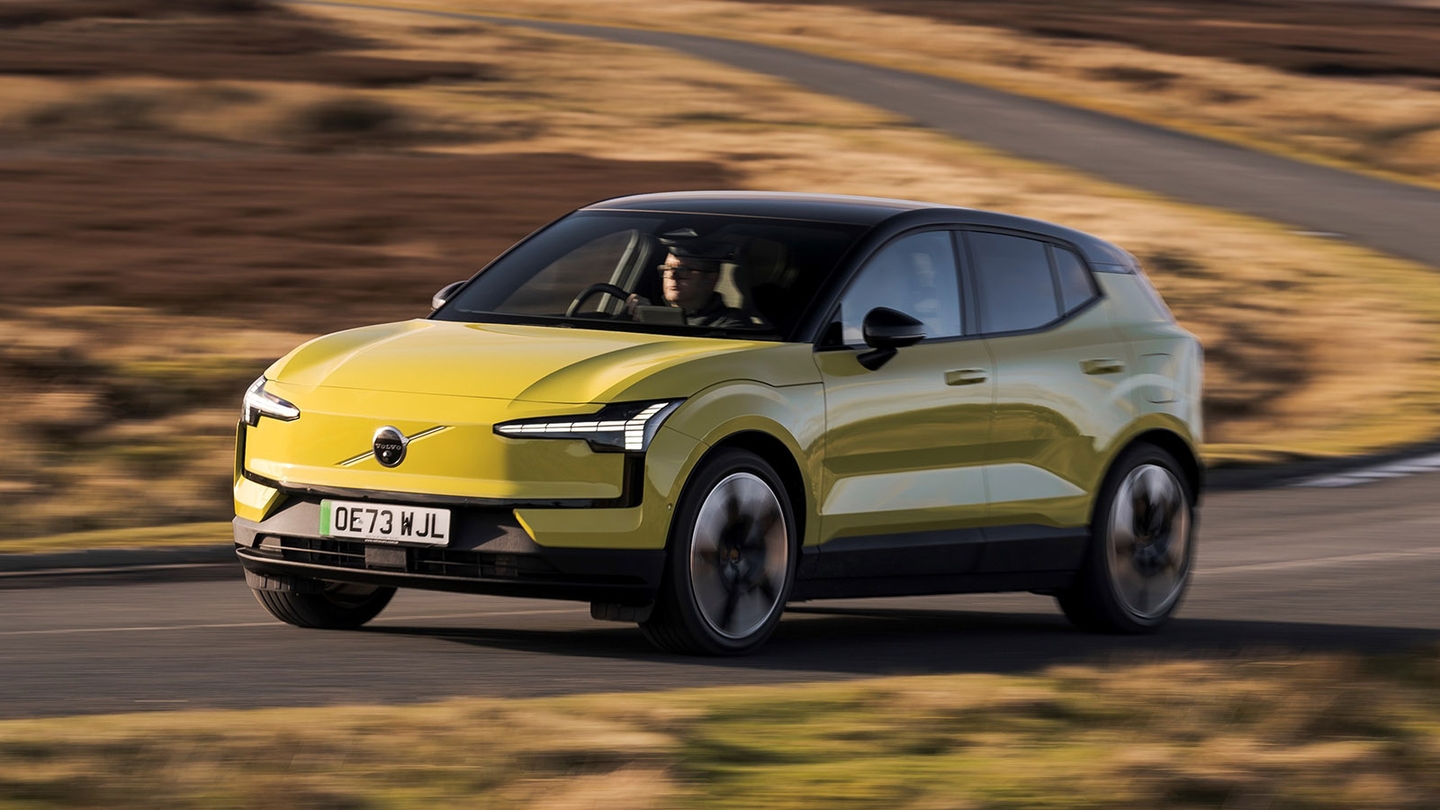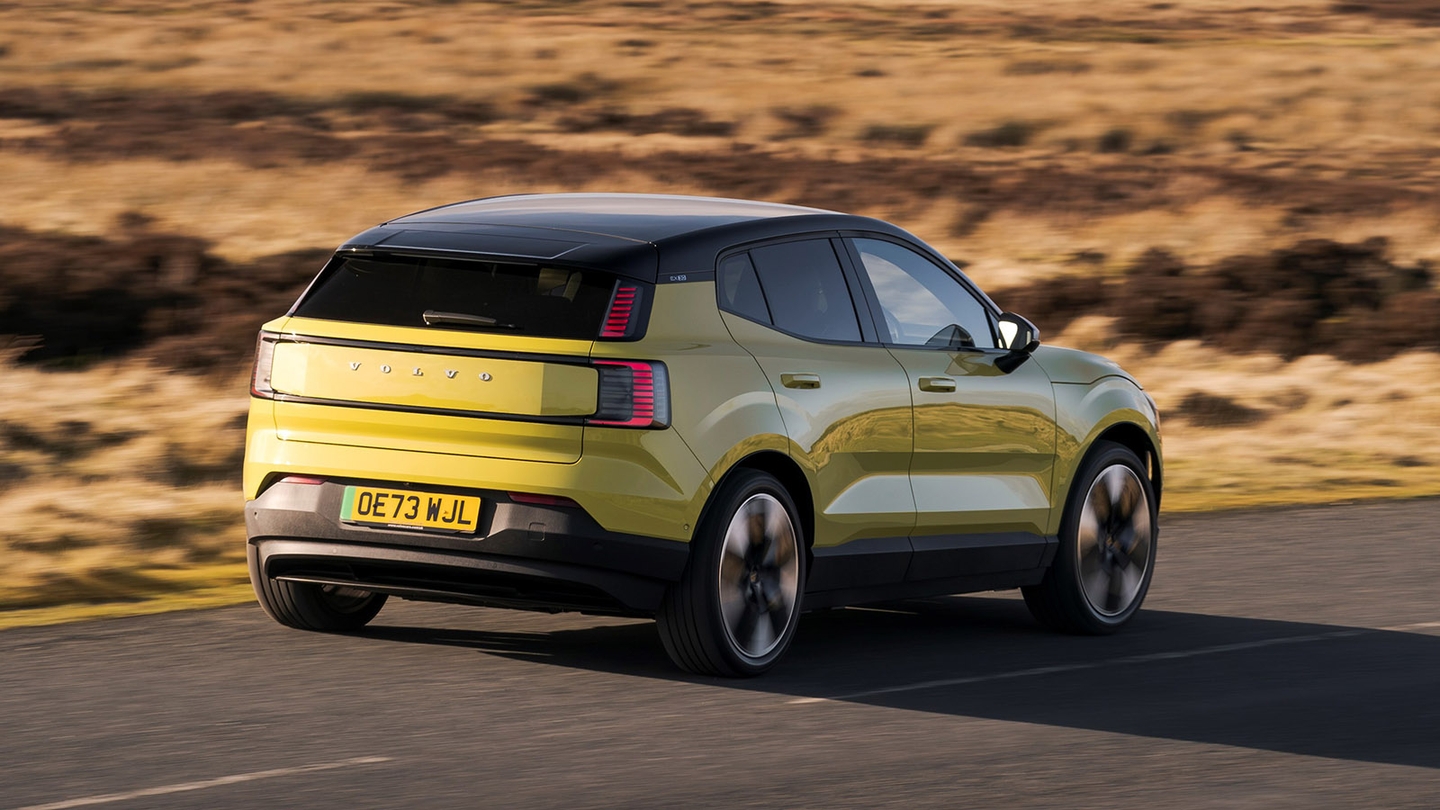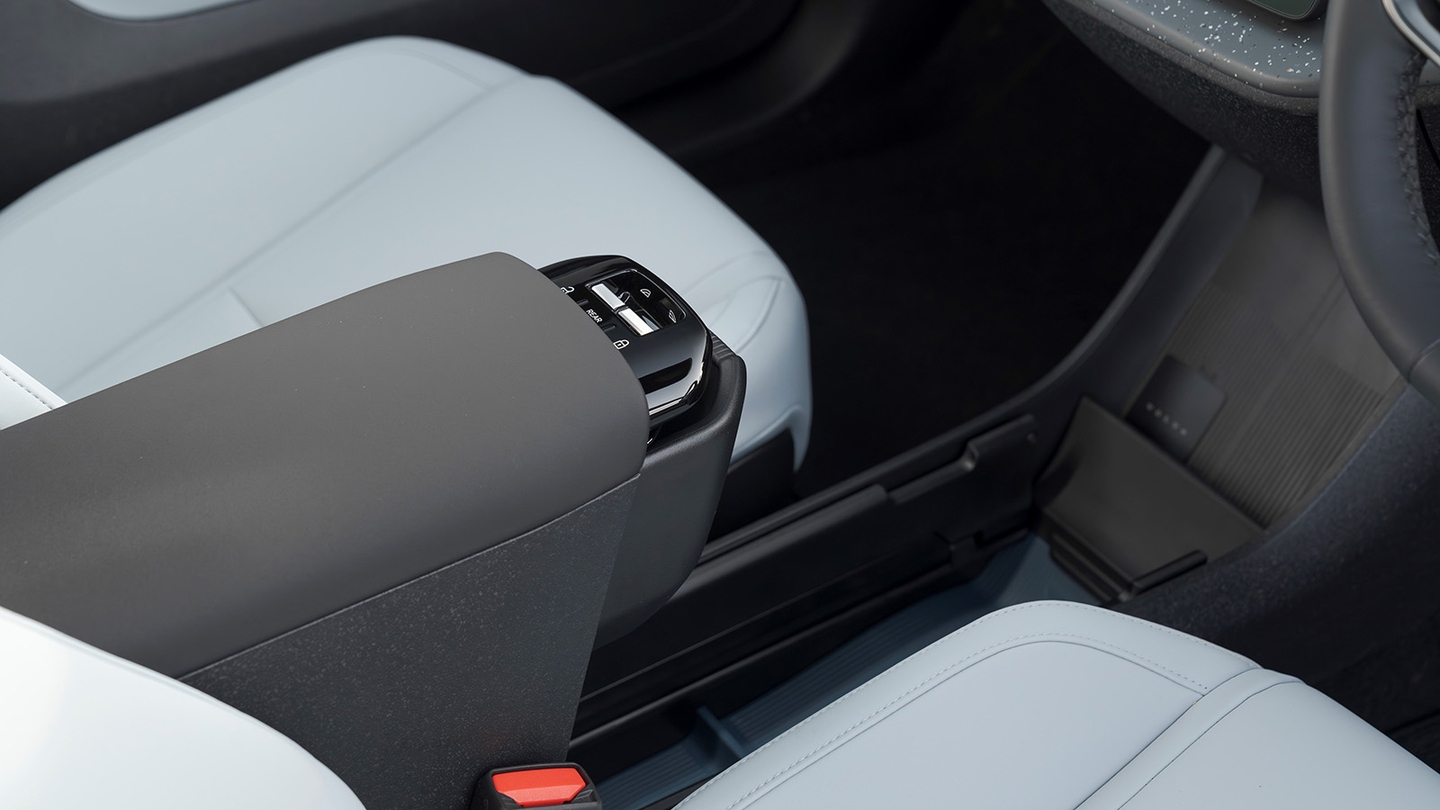













Volvo EX30 review

Everything seems so expensive at the moment. So you might expect the Volvo EX30 we're reviewing here – a premium, battery-powered SUV – to have a hefty price tag.
However, thanks to EV tech shared with Geely, Volvo's Chinese parent company, and some tactical cost-cutting in the cabin, this upmarket option costs from just over £30,000 – and even less if you buy a used EX30. That puts it in line with cars like the the Kia EV3, Fiat 600e, Smart #1 and Jeep Avenger.
- Smooth, calm driving experience
- Attractive styling
- Competitive pricing
- EV performance is a bit lacklustre
- Some interior cost-cutting measures go too far
- Too reliant on its fiddly touchscreen
Should I buy a Volvo EX30?
One of the biggest barriers stopping some buyers from swapping over to electric cars is the noticeable price premium over fuel-powered options. That's the trend the Volvo EX30 is aiming to buck – this is a sharp-looking electric SUV from a premium brand, but prices start from a little over £30,000 – far below its nearest rivals from BMW, Mercedes and Audi. So, what has Volvo done to help the EX30 hit this figure?
From the outside, you might struggle to spot anything that cheapens the car compared to the rest of the range. The EX30 is a slick, modern looking car with squared-off styling and a bluff, grille-less front end – the same visual shorthand that marks out most of today's electric cars.
There are some neat details, too, that make the car look more distinctive. Mid-range Plus and high-spec Ultra cars come with a contrast-colour black roof, which breaks up the sheet metal and gives it a youthful edge. We like the chunky fridge-door-style handles that look like they've been carefully chiselled from rock, and the sneaky little model badge on the car's C-pillar. Its best feature in our eyes, however, is the neat lighting at the front and back, with dozens of little illuminated panels making up the overall lighting signature. These include details like the 'Volvo' script illuminated in the brakelight housings, all serving to make the car feel more posh.

So, Volvo doesn't seem to have saved money on the EX30's exterior, which means most of the savings have been made in the cabin. However, at a quick glance, the cost-cutting might not leap out to you. All models get a crisp portrait-orientated touchscreen nestled atop a colourful panel in the dash with Art-Deco-style air vents at either side. You also get attractive upholstery featuring a combo of artificial leather and sportswear textiles.
Spend a little more time on board, however, and you'll start to see how Volvo built the EX30 down to its tempting price point. For example, the window switches are built into the car's centre console, so there are no controls at all on the door panels, and none of the associated wiring. You might also spot the wide TV-style soundbar at the front of the car – a neat feature but it also means Volvo hasn't bothered fitting any other speakers elsewhere in the cabin.
In fact, probably the most conventional part of the EX30 is the electric powertrain underneath it. There are two battery sizes available and a choice of either a single-motor rear-wheel-drive setup, or a faster twin-motor all-wheel-drive version. Our test car came with the extended-range battery and rear-wheel drive – a popular configuration – but we found ourselves wishing there was a bit more punch when we floored it. Most premium EVs deliver serious off-the-line acceleration but Volvo has clearly set the EX30 up for a smoother, more sedate driving experience.
Interior and technology

Like other Volvo and Polestar models, the EX30 has embraced the minimalist aesthetic that's so popular among today's EVs. In fact, it leans harder into the theme than its stablemates – there are no physical buttons on the dashboard, just a single portrait touchscreen in the middle handling all main functions. You get a handful of buttons on the steering wheel for voice control, cruise control and stereo functions, plus a column-mounted shifter to select park, drive and reverse. There's no driver's gauge cluster either, which means you have to look away from the road at the screen to see your speed.
Another cost-cutting measure is the door panels. Volvo's moved the window switches to the centre console and the door mirror adjustment to the touchscreen to simplify the doors. Those panels no longer contain stereo speakers either because all the audio is now handled by a single full-width soundbar at the front of the cabin. There's nothing wrong with this setup – it even means you get big doorbins to store your odds and ends – but it's a fairly unconventional approach by class standards.

With all the main functions moved to the single central infotainment system, that screen has a lot of ground to cover. Volvo has tried admirably to make sense of all the different controls, but we found ourselves constantly hunting through the shortcut buttons along the bottom to find the function we wanted. That means many adjustments first require you to tap away from the car's home screen before actually making the change you want, all of which means more time spent looking away from the road. Find out what happened when we used science to measure how distracting modern car screens are.
Another admirable but iffy choice comes from Volvo's attempts to reduce the environmental cost of building the EX30. Most cars come with an 'indigo' interior theme, which makes use of recycled denim in the blue panelling across the dashboard and door panels. The material is a nice colour match for the blue fabric upholstery, but it feels hard and scratchy to the touch. We also happened to test the EX30 on a rainy day and found that rain droplets were leaving splotchy marks on the door panels while they were open – we're confident this would disappear once dry but it looks poor compared to more traditional premium rivals.
Practicality

Space up front in the EX30 is impressive. Like some EVs, it's abandoned the traditional centre console, which means there's a large open area between the front seats that can hold a handbag or rucksack. Further back, there's a centre armrest that contains the window switches and a slide-out tray/cupholder combo. There's a small shelf under the dashboard for your smartphone to sit on, and this includes a wireless charger from mid-range Plus trim and up.
Rear space is a little more limited, with the car's 4.2-metre length – essentially the same as a Volkswagen Golf – being the limiting factor. You'll be able to fit adults back there but tall passengers will find their knees brushing the front seat backs. Access to the back is slightly restricted, too, by the car's sloping roofline, and battery pack under the floor means your feet and knees end up resting a touch higher than you might like. Range-topping Ultra models include a fixed panoramic glass roof, although this doesn't substantially impact the car's decent headroom.

The 318-litre boot is similar in size to the family hatchbacks the EX30 shares a similar footprint with. That'll probably be enough for most buyers unless they have very small children, as bulky pushchairs might prove challenging to load. There is some handy under-floor storage to bring the total space up a little, plus a handy under-bonnet 'frunk' that's just large enough to store an EV charging cable. The EX30's figure does lag behind some rivals in the class, especially the 460-litre Kia EV3.
Range and performance

There's a choice of three battery and motor setups available for the EX30. The most affordable model comes with a 51kWh battery pack and a single motor on the rear axle. Claimed range is 209 miles, which makes this a good choice for buyers after a second car for urban driving and commuting, with access to another vehicle for longer journeys.
Our test car came with the same rear-wheel-drive setup but the larger 69kWh extended-range battery pack. This brings a nice jump in range to 296 miles, which makes it the better choice if you're buying the EX30 to replace a fuel-powered car. If you can find a fast-charging station that can deliver the car's max rate of 153kW, you'll be able to recover a 10-80% charge in 28 minutes.

That single rear motor is a beefy 200kW (272hp) unit that delivers an impressive 0-62mph time of 5.3 seconds on paper. We found that real-world performance never seemed to match the on-paper figures, however, even when you take the car's fairly substantial 1.8-tonne mass into account.
The problem is that the EX30 has a deliberately gentle throttle mapping so, even when you floor the pedal, you're expecting more acceleration or the entertaining kick to the spine we've come to expect from EVs. When you're just cruising around, the car's sedate setup is easy to get on with, but we'd hoped for a little more excitement based on the car's claimed performance.
If you want more of a thrill when you pin the throttle, you can always upgrade to the EX30 twin-motor model. This adds a second motor on the front axle for all-wheel drive and a grand total of 315kW (428hp), slashing the 0-62mph time to just 3.6 seconds. That's quick enough to go toe-to-toe with some seriously exotic sports cars.
Driving and comfort

The EX30 is easy and intuitive to drive. You aren't bombarded by driving modes and the main controls are light, responsive and predictable. It feels stable in almost all driving situations, aided by the weight of the battery being down low in the chassis.
That weight does become obvious if you start driving the EX30 more aggressively, with quick direction sending plenty of G forces through you and your passengers. It never feels wayward or unmanageable, but neither do you get the sense it wants to reward you for sporty driving. Instead, once you embrace the Volvo's calm, unfussy driving experience, you realise this is an excellent car to commute in, demanding very little effort from the driver.

Our test car was outfitted with massive 20-inch alloy wheels that give it a sporty stance in the metal. Remarkably, these huge rims don't have much of an impact on the car's ride quality, which is compliant and composed on most surfaces. There was little of the high-frequency vibration you find in some cars fitted with big wheels, nor the hefty thuds you get in some heavy EVs as their springs fight to control the car's mass.
Our only real complaint is about the car's visibility. Your view out front is fine but the thick C-pillars and sloping roofline mean over-the-shoulder visibility is pretty poor. That means you'll be relying on your door mirrors a lot as you drive, which is a good thing as they're fairly attractive 'frameless' units with a big reflective area. In addition, all models get rear parking sensors and a reversing camera as standard, with all-round sensors fitted from mid-range Plus trim and up.






























































